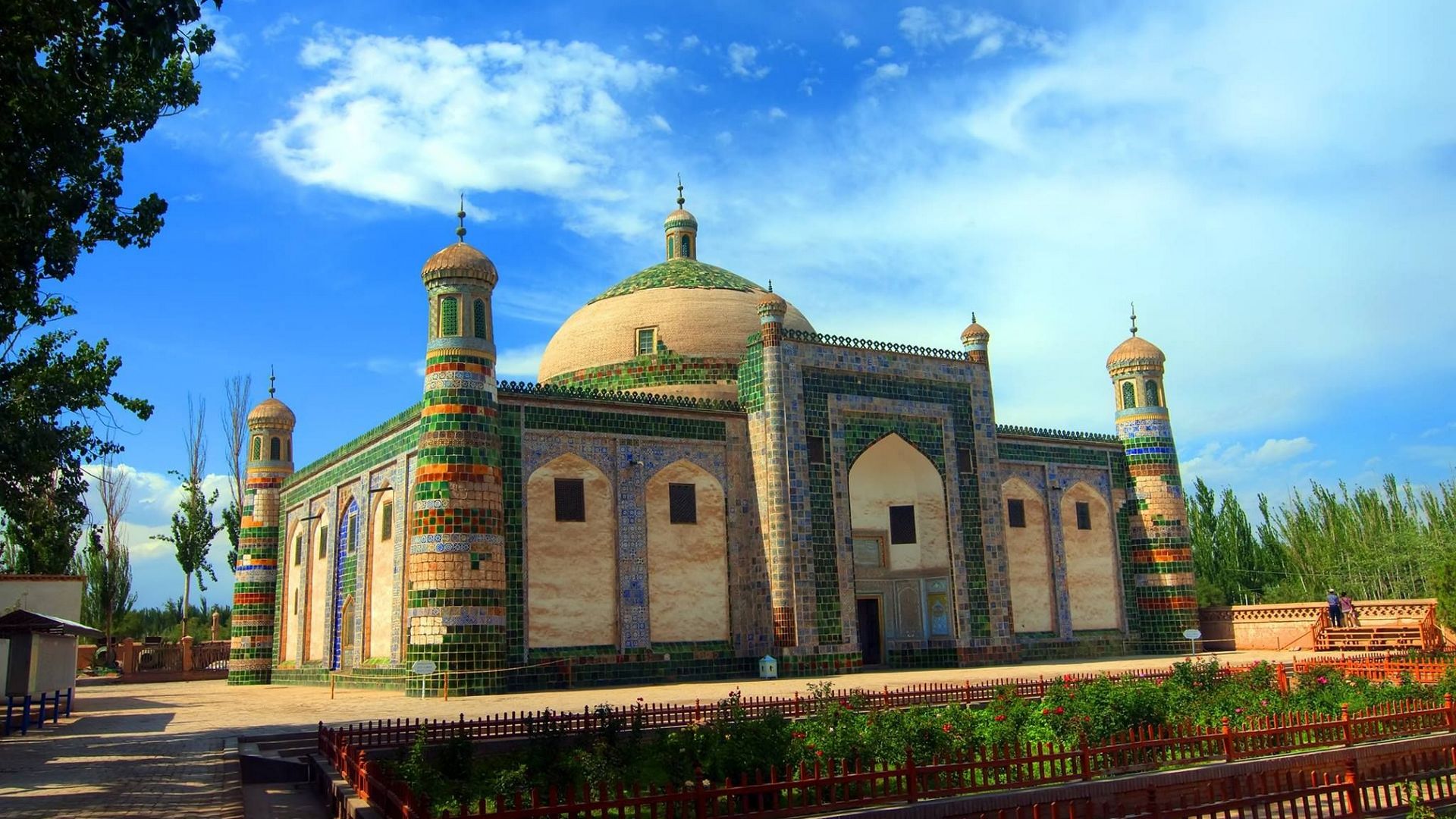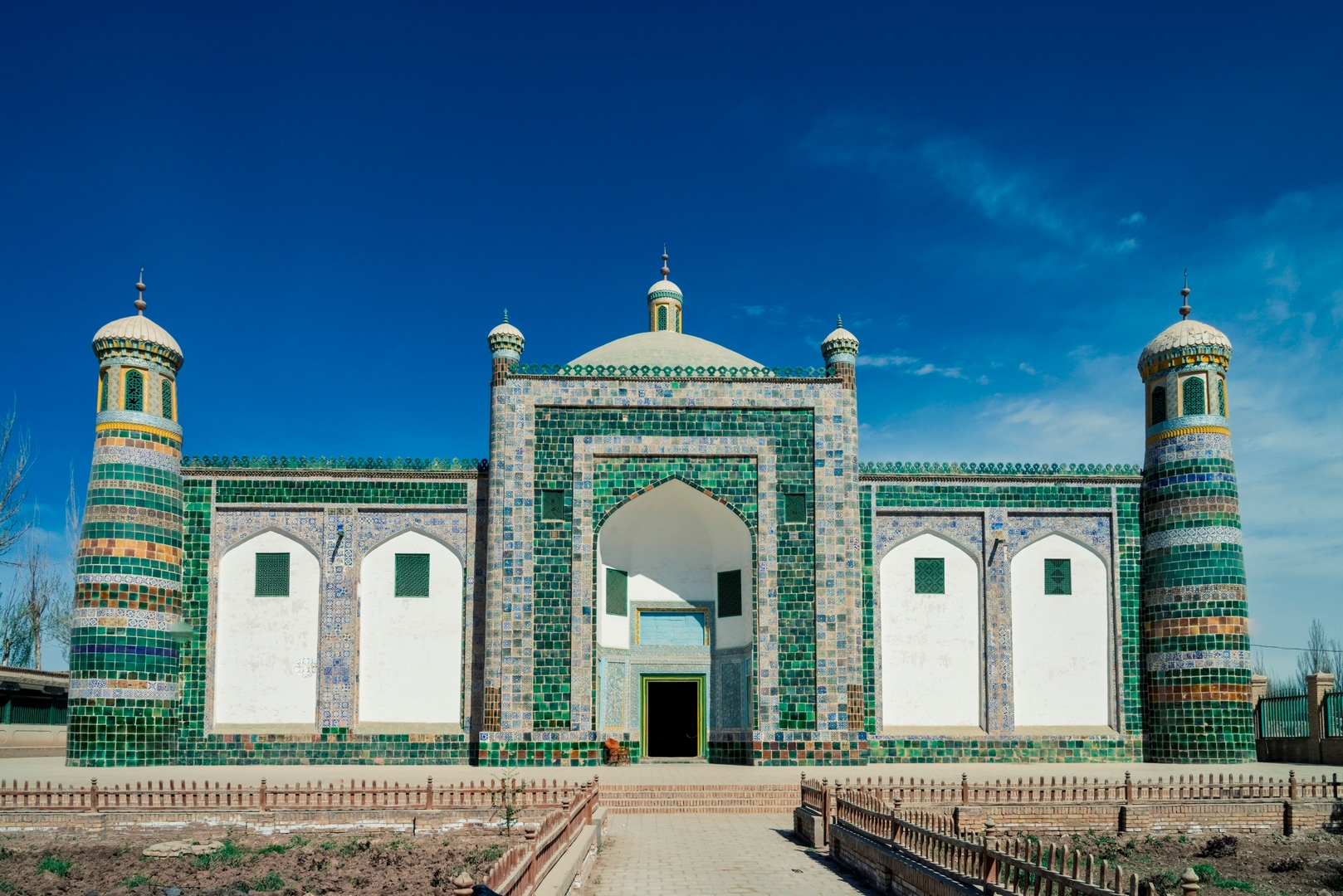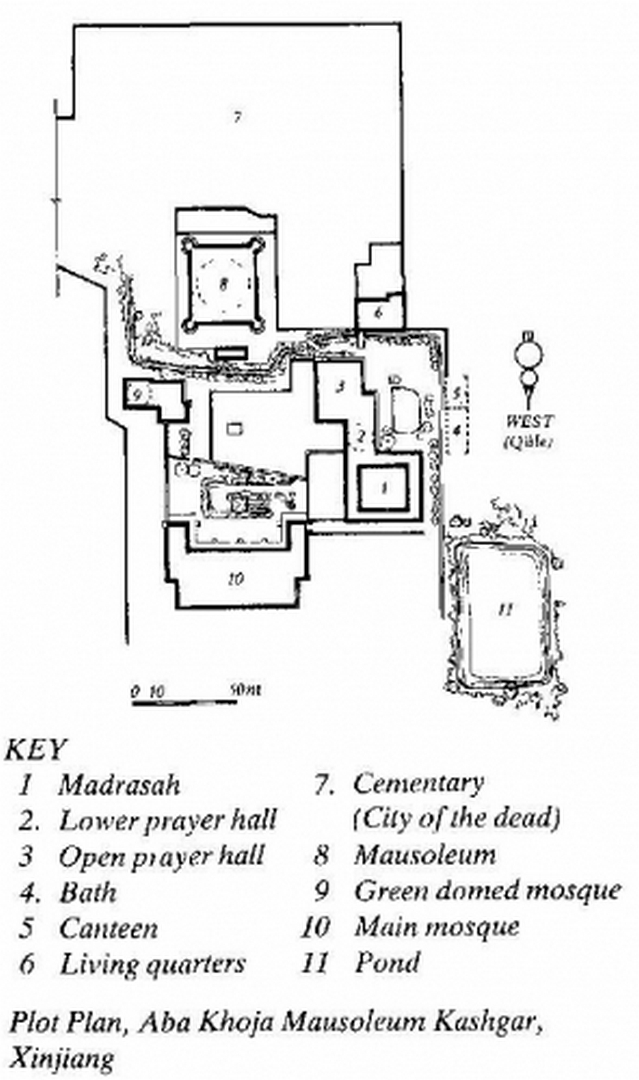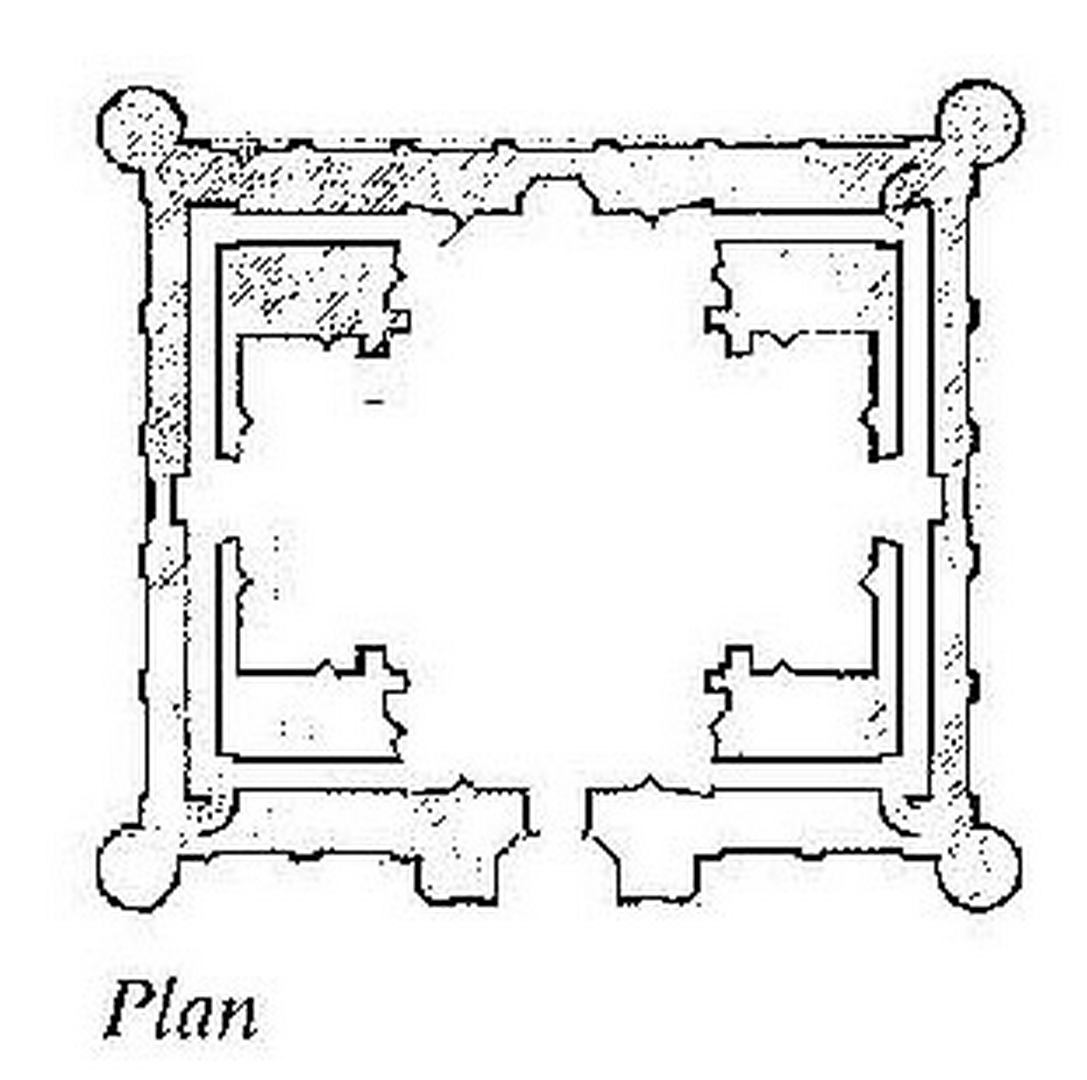Description
Property Name: Apak Khoja Mausoleum
Inventory No: 86-998-1
Date of infill of the inventory form: 2009-07-27
Country (State party): China
Province: Xinjiang
Town: Kashgar
Geographic coordinates: 39.490392, 76.022518
Historic Period: 17th century, 1st half
Year of Construction: 1640
Style: Timurid
Original Use: Mausoleum
Current Use: Mausoleum
Architect: Unknown
Significance
Apak Khoja Mausoleum Complex is founded for the Khoja Family who ruled Xinjiang between 17th and mid of 18th century. The complex is a respectable one as being the largest Islamic Complex within the Xinjiang Province area; also it is a major pilgrimage center for Kashar. The campus is built on a fairly regular field with a number of religious buildings, built in different periods. Apak Khoja Mausoleum Complex is composed of a madrasa, a mausoleum, a main mosque, three other praying halls and an exterior graveyard. As the name refers, the complex is significant with its mausoleum which is richly decorated with colorful and pattern varied tiles. The symbolic tombs, the cenotaphs are also significant with their inscriptive and blue colored tiles. Within the complex, also the architectural elements of the portico in the Great Mosque and the High Mosque are unique elements. The columns with painted muqarnas or polychromatic capitals and ceilings with remarkable wood and paint work are noticeable architectural features of the complex.
Selection Criteria
iv. to be an outstanding example of a type of building, architectural or technological ensemble or landscape which illustrates (a) significant stage(s) in human history
vi. to be directly or tangibly associated with events or living traditions, with ideas, or with beliefs, with artistic and literary works of outstanding universal significance
State of Preservation
The complex is known to be built in periodical steps. The first building was the madrasa, built in the beginning of the 17th century, which was followed by the erection of Yusuf Khoja’s mausoleum for himself in 1640. However, Apak Khoja, son of Yusuf Khoja became more famous and was buried here in 1693. By the end of 17th century, in the northwest of the mausoleum, the Small Green Mosque was built for Apak Khoja to read Qur’an.
Uttermost, the Great Mosque was erected just across the Mausoleum, on the western side by Yakup Beg, in 1873.
In 1926, an intervention was made to the southern prayer hall, the High Mosque. A portico with carved and painted wooden columns, having muqarnas capitals was added for shaded place. Today the brick details and other elements are well preserved.
In the mid of 20th century, the gateway of the complex was under repair in which cement mortars was used. As a result of cement’s irregular behavior against temperature and humidity, corrosion damaged the building. By the earthquake occurred in 1978, additional damages cropped up.
Also there is some deterioration dependent to earthquakes and some other external effects, visible on the surface of the dome, like the missing tiles and beautiful painted wood work doors are partially peeling due to external conditions.
However, Apak Khoja Mausoleum Complex is still admired as a well preserved complex, with original details kept, not only in Xinjiang but also throughout Central Asia.
References
Michell, George; Vicziany, Marika; Gollings, John; Yen HuOasis, Tsui City. Oasis City on China’s Old Silk Road, Frances Lincoln ltd., 2008
Chang, Jing Qi. Islamic Architecture in China. In The Changing Rural Habitat; Volume 2 : Background Papers. Brian Brace Taylor (ed). Singapore: Concept Media/The Aga Khan Award for Architecture. 1982.
Dazhang, Sun. 2003. Ancient Chinese Architecture: Islamic Buildings. New York: Springer-Verlag/Wien, 121.
Archnet website: http://www.archnet.org





